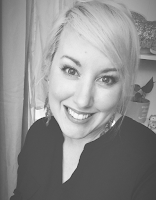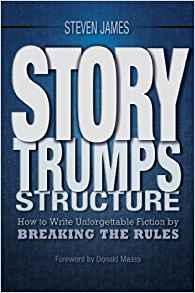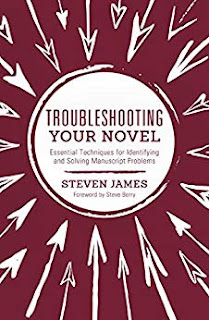The Lexington (SC) Serious Writers’ Tour with Steven James, Michelle Medlock Adams, and Bethany Jett
 |
| Bethany Jett |
by Paula Gail Benson
In
May, the local Word Weavers group, an affiliate of Word Weavers International,
brought the Serious Writer One Day Tour to the Riverbend Community Church in
Lexington, S.C. If you’re looking for excellent craft and business instruction,
I suggest you check out the offerings at http://www.seriouswriter.com.
The organization, operating since 2015, has online classes as well as the
one-day programs and appearances at conferences.
 |
| Michelle Medlock Adams |
The
instructors who attended the Lexington meeting were Michelle Medlock Adams, a
journalist and award-winning author of primarily children’s books and
devotionals; Bethany Jett, co-founder of The Serious Writer and Vice-President
of Platinum Literary Services, whose work includes devotionals, ghostwriting,
and marketing; and Steven James, who I knew as a prolific thriller writer and terrific
writing instructor, whose craft books include Story Trumps Structure and Troubleshooting
Your Novel. I also learned that he had written a significant number of
books for the inspirational market.
decided to attend the program because I had heard Steven James speak at Killer
Nashville and I knew he taught a highly respected novel writing intensive
course with Robert Dugoni, limited to twelve participants each year. His
presentations for the Serious Writer tour were very generous, including
specific techniques and excellent handouts to help with crafting twists,
creating suspense, and revising problem areas. While I spent most of my time at
Steven James’ sessions, I also very much enjoyed the portions of the program
where all the authors joined in to give tips about the process of marketing a
book and using social media. The day was full of good advice and fellowship.
 |
| Steven James |
Following
are some great lists of information that James provided for improving story
telling:
of Story Telling
orientation, which lets a reader know where the story takes place, then
provides the hook that gives the impetus for escalation;
crisis or calling, which is what goes wrong, turns the world upside down, and
makes the protagonist respond;
escalation, which occurs as things get worse and is in two parts: (a) the
moment of despair and darkness, and (b) the inevitable, unexpected conclusion;
and, finally, as the story ends, are:
discovery, and
transformation.
James
recommended that every story is driven by tension and every scene should end
with a plot twist. To be satisfying, plot twists should be:
escalation of what preceded it; and
a revelation of what went before.
categorized the five types of plot twists as:
identity;
awareness;
complexity (example: a sting operation);
cleverness; and
peril.
listed four essentials for creating suspense:
reader empathy (that is, providing a character trait or desire with which a
reader can identify, for example, to love and be loved or to have an adventure);
reader concern (giving reasons why a reader should care about the characters);
impending danger (physical, psychological, emotional, spiritual, or relational);
and
escalating tension.
what would the character naturally do?
how can I make things worse?
how can I add twists or take the story in a new direction?
what promises have I made that I have not yet kept?
James said that that everything you write is a promise and that in fiction a
writer has both stated and implied promises. In distinguishing among mystery,
suspense, and horror, he gave the following characteristics:
mysteries are intellectual, not emotional activity where the detective is two
steps ahead of the reader;
suspense deals with important life matters where the reader is two steps ahead
of the characters and wants to stop the danger; and
horror allows the gruesome event to happen with the reader and characters in
the same place.
you want to read more, please check out Steven James’ website, http://www.stevenjames.net/, and his
recorded interviews with other writers at https://www.thestoryblender.com/.
if one of the Serious Writer tours or events is coming near you, you’ll find it
a great program to attend!


